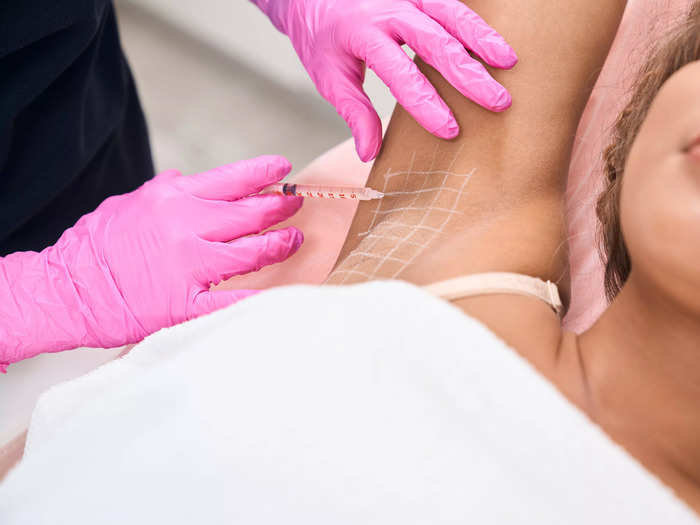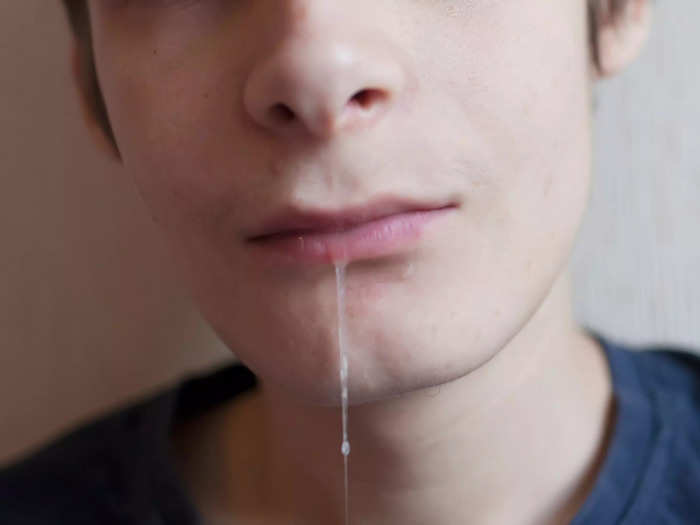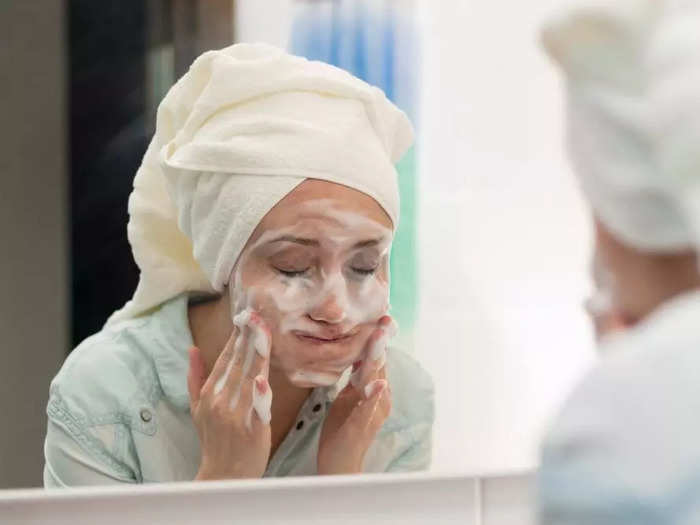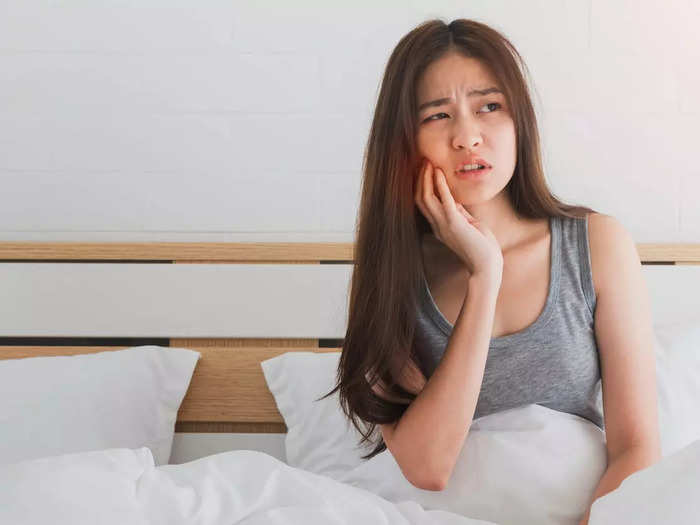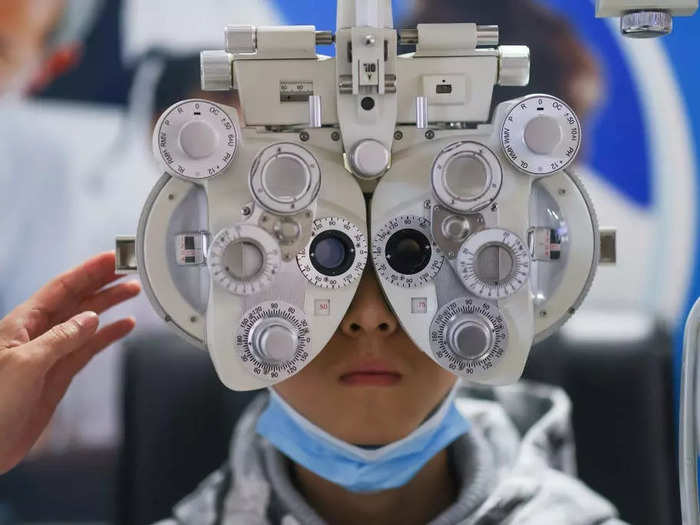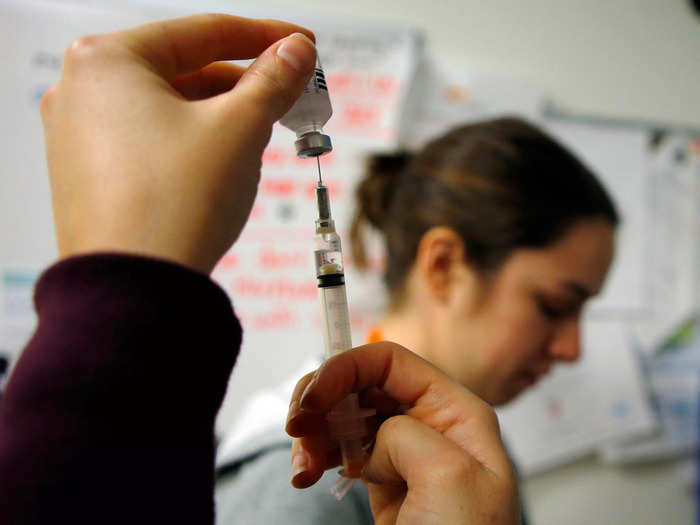Doctors can inject Botox in places that aren't the face to treat a variety of medical conditions.Rick Friedman/Corbis via Getty Images
- Botox is far from just a wrinkle-reducer.
- The neurotoxin relaxes your muscles, which can help a number of conditions like an overactive bladder and teeth grinding.
Botox isn't just for the face. Doctors inject Botox in many parts of the body, including some patients' feet and vaginas — but for medical reasons, not to make them prettier.
Botox is a brand name for the neurotoxin "botulinum toxin," which, when injected, prevents nerve signals from reaching the muscles. The blocked signal keeps muscles from contracting, which is why Botox keeps facial muscles from tensing up and creating wrinkles.
But there's other muscles in the body that could use some neurotoxin-induced relaxing, particularly when they are causing other health problems. Botox in the bladder can help people who frequently need to pee; Botox in the jaw can keep you from grinding your teeth at night. Here are eight other surprising applications of Botox:
Botox in your armpits is a common treatment for excessive sweating.
Botox on the feet, armpits, and scalp can treat unwanted sweating. Getty Images
Botox injected into the armpits and feet can help people who sweat too much and for no reason.
The Food and Drug Administration has approved Botox to treat hyperhidrosis, the medical term for abnormal or excessive sweating not caused by heat and exercise. Hyperhidrosis is caused by the over-activity of the nerves that send signals to your sweat glands, and inflicts nearly 3% of Americans.
"Sweating is controlled by glands that are wrapped in muscles so Botox touching these 'sweat gland muscles' will stop the production of sweat," Lesley Rabach, a board certified facial plastic surgeon at LM Medical, previously told Insider.
Botox can be injected in any sweaty area, like the scalp, armpits, groin, hands, or feet.
Botox can offer temporarily relief to people with an overactive bladder.
A urologist can inject Botox into the bladder to help people who often feel a sudden urge to pee. Getty Images
The FDA has approved Botox to treat overactive bladder (OAB), a common condition where the bladder walls contract frequently and at the wrong time — causing people to feel sudden and difficult-to-control urges to pee, and might cause involuntary loss of urine.
The condition afflicts one in 11 people in the US, and is more common among women and people over 65, Insider previously reported.
Using a cystoscope, urologists inject Botox into the wall of your bladder, which should cause muscles to relax and contract less frequently, according to Cleveland Clinic. Though largely effective for people with OAB, Botox might not take effect until 12 weeks after the procedure and wears off after about six months.
Botox can help kids and adults who suffer from excessive drooling, particularly when it's causing other problems.
Botox injected straight into the salivary glands can prevent excessive drooling. Getty Images
Botox can prevent drooling, particularly when it's becoming a health concern.
Drooling is common among people with Parkinson's disease, a nervous system disorder that causes tremors and slow, imprecise movement. Verywell Health reported up to 78% of people with Parkinson's say they drool, possibly because the disease can make swallowing more challenging.
Kids, too, can drool too much before oral-motor function is fully developed, per Royal Children's Hospital in the Australia.
Aside from being uncomfortable and causing embarrassment, excess drooling can cause skin irritation, bad breath, and even pneumonia if accidentally ingested.
For this application, a doctor injects Botox directly into the salivary glands to stop them from producing too much saliva, Verywell Health reported. The procedure is minimally invasive, but it might cause dry mouth and only lasts three to four months.
Botox can treat a disease that causes cold hands.
Doctors at the University of Chicago use Botox to treat a condition that causes cold hands. Getty Images
Raynaud's disease, or Raynaud's phenomenon (RP), is when blood vessels in your fingers and toes narrow abnormally, causing the skin to turn white, numb, become cold, or swell. The sensation typically occurs when a person with Raynaud's disease is stressed or exposed to cold environments.
There is no cure for Raynaud's disease, but studies, including one 15-person, 3-year trial, indicate Botox can reduce symptoms. The University of Chicago has injected people with Raynaud's disease in their hands, which paralyzes nearby muscles and allows blood vessels to become bigger and circulate blood more effectively.
Some doctors treat a condition that causes painful sex with Botox.
Botox may help people with vaginismus, though the FDA hasn't approved it as a treatment yet. Crystal Cox/Business Insider
Vaginismus is a condition where muscles in the pelvic area contract involuntarily during vaginal penetration, causing extreme pain during sex and tampon insertion.
Though the FDA hasn't approved using Botox for vaginismus, research suggests the injection can help people with the condition. As Insider previously reported, a comprehensive report published in 2017 in the journal Sexual Medicine found a combination of Botox, therapeutic counseling, and other treatments resulted in pain-free intercourse for 71% of the 241 participants.
Botox might lessen acne and improve acne scars, but only temporarily.
Botox can improve acne and acne scarring. av_antropov/Shutterstock
Regular Botox injections might lessen acne by reducing the your face's ability to produce oil, Medical News Today reported.
Botox injections can inhibit the growth of sebaceous glands, which produce an oily substance that coats and protects the skin. Too much of the substance can mix with dead skin cells and other dirt to block pores and cause acne.
Botox might also help with acne scars, per Mayo Clinic, particularly when the skin around acne scars puckers or tightens up. Botox can relax the surrounding skin, but results last only a few months.
Botox might help people who clench and grind their teeth.
Injecting Botox to the muscles in your jaw can help alleviate teeth grinding. BUNDITINAY/Shutterstock
The Atlantic reported that demand for Botox injections to the muscles in the jaw responsible for chewing increased during the pandemic. The injection can treat symptoms of bruxism, or teeth grinding, which afflicts one in five adults and can cause long-term enamel loss and receding gums.
Like most every condition treated with Botox, the results are not permanent — but they can work better than nightguards, which worsen teeth grinding for some users.
Botox was actually approved to treat crossed-eyes before wrinkles.
Ophthalmologists can inject Botox directly into the eye to help with misalignment. VCG / Contributor / Getty Images
Believe it or not, the FDA approved Botox first as a treatment for strabismus, or when the eyes are misaligned. Doctors inject Botox directly into the eye muscle, per the American Academy of Ophthalmology. Though eyes can become misaligned again after 3 to 4 months, repeated treatments can cause the effect to last longer.
In the 1990s, an ophthalmologist treating people with tight eyelid condition began noticing their wrinkles were going away, which led to dermatologists first using Botox off-label, Insider's Lydia Ramsey Pflanzer reported.
Botox injections to the head and neck can treat migraines and stop muscle spasms.
The FDA approved Botox injections to the head and neck as a treatment for migraines and a condition that causes involuntary head movement. peepo/Getty Images
The head and neck popular sites for Botox injections, as the FDA has approved Botox in those areas to treat chronic migraines and cervical dystonia, a painful condition that causes your neck muscles to contract and jerk your head around.
To treat migraines, Botox injections to the head and neck can weaken facial and scalp muscles, releasing tension that can cause migraines, Insider previously reported.
Botox injections in the stomach are thought to help with weight loss, but researchers doubt the treatment is effective in the long-term.
Botox injections in the stomach may keep the organ from contracting, slowing digestion. Brian Snyder/Reuters
Botox injected into the stomach might help some patients lose weight.
When injected into the stomach using an endoscope, Botox immobilizes the muscles of the stomach wall to prevent them from contracting, which keeps food in the stomach longer, slows digestion, and helps the patient feel full for longer, according to Johns Hopkins.
Results after this treatment are mixed. A 2016 study of 20 people with obesity found most participants lost weight through Botox injects in the stomach, following three treatments over the course of 18 months. But a 2017 review of prior research, published by doctors at Weill Cornell, found no evidence stomach botox injections in patients with obesity leads to effective long-term weight loss.
(AbbVie, the company that produces and sells Botox, did not respond to Insider's request for comment.)

